
UKRAINIAN CULTURE UNDER MONGOL-TATAR INVASION.
CULTURE OF THE KINGDOM OF GALICIA-VOLHYNIA
Historical conditions of cultural development.
Cultural development in second half of the 12th-15th centuries was defined by difficult historical situation. Before Mongol-Tatar invasion Kiev Rus was separated in a set of Kingdoms, independent from each other, which led to absence of military unity. Therefore it was extremely difficult to Kings to resist the big, well trained and violent mongol-tatar army. 1237-1240 are the most tragic years in Kiev Rus history. Chronicles and archeological sources tell about terrifying fires, street fights and mass destructions in Kiev, Chernigiv and other cities. Numerous masterpieces of culture were destroyed; ten thousands people were killed or stolen as slaves, including some professional workers; the rest of population ran away from the regions into woods.
In the 40-ties of the 13th century the Mongol-Tatar Yoke started in most of the Kyiv Rus Kingdoms, and it ended only in 25 years. There were the other 25 years of periodic attacks by Kazan, Astrakhan and Crimean khans, supported by Turkey. Devastation and hard tax led to the long economic decline. No cities were built during the first 50 years of mongol-tatar invasion. A lot of building and manufacturing technologies were forgotten at that time. Kiev Rus became separated from world trading ways.
Mongol-tatars did not influence the character of culture essentially, though some words are borrowed from Tatar into Slavonic languages. Record of national cultural achievements was so tremendous, that it became a basis for the further culture development. Also, being captured by mongol-tatars, Kyiv Rus saved relations with Byzantine world, and later that turned out as a starting point of spiritual uprise.
Russian Metropolitanate (the head division of Orthodox Church) submitted to Constantinople. Understanding the role of church, horde rulers tax-exempted Orthodox clergy and their ground possessions became untouchable, under a condition that church leaders – mitropolitans (and Kings also) would go to take the ‘yarlyk’ (i.e. edict (именной указ) of Horde. As a result of this church was the center of cultural life in Kiev Rus even in the hardest historical periods.
Notably that trade in Rus moved from Kyiv Kingdom to the Kingdom of Galicia-Volhynia, where ways from Western, Northern and Eastern Europe crossed. Kings invited foreigners to live in their cities, thus developing international trade. It resulted in intensive cultural development of the region. Galicia-Volhynia culture is original, combining Kyiv Rus traditions and innovations of neighbouring countries – Western and Eastern Europe.
EDUCATION in lands of Galicia and Volynia continued the traditions of Kyiv Rus. Church and monastery schools invited boys, who were 7 years old and more. Later they became clerks at Kings’ offices, clergymen or inherited their fathers’ job. Home education was popular with rich people – boyars, who lived in the countryside.
There were libraries to enrich knowledge at monasteries and Kings’ offices. The best known is the library of King Vlarimir Vasilkovich. Writing tools, inscriptions on church walls, birch bark, personal things, weapons and tools prove that literacy was wide-spread among craftsmen, merchants, boyars and King’s guard. There are several manuscripts survived – birchbark letters of Zvenigorodsk and Brest, and parchment (пергамент) letters of Kings.
LITERATURE and CHRONICLE WRITING. Though existence of secular (мирской, светский) literature of Galicia and Volynia is of no doubt, the texts did not survive up to these days. Researchers consider “The Tale of [King] Vasyl’ko’s blinding” to be the earliest of them. It was written in 1097 by an anknown author and tells about the tragic fate of Trebovlanskiy King Vasyl’ko Rostislavovych, who was blinded by a Volynian King in internal war.
The brightest written monument of the Galicia-Volynian Kingdom is “Galician-Volynian Chronicle”, found by a prominent Russian historian M. Karazin in 1809. it was first written without yearly division, and there appeared many mistakes in dates, when it was later copied. The Cronicle consists of two parts, combined from different stories/tales: by chronicler of Danylo of Halych (it tells about events of 1205-1258) and Volynian Chronicle (1258-1290). The life of Danylo of Halych is the central part of the Chronicle. It was he, who united Volynian lands in the 13th century, thus creating the Kingdom of Calicia-Volynia. During his realm a number of cities, including Lviv, were built. The “Galician-Volynian Chronicle” is an essencial source of knowledge about culture development in Galicia and Volynia, the ancient Ukrainian language, about ideology against boyars’ self-will. It is very emotional and lyrical, glorifying the weapon and land of the Rus.
G |
||
www.iot-ekb.ru |
opentorrent.ru |
|
|
|
|
|
||
|
Ancient portrait of Danylo of Galych in royal dress |
Under Czech influence the first stone cathedrals appeared in these lands as early as in the 9th-10th centuries. Yet, the majority of cathedrals of the 9th-13th centuries did not survive. In the 12th-13th centuries Volynian and Galician schools of architecture formed.
W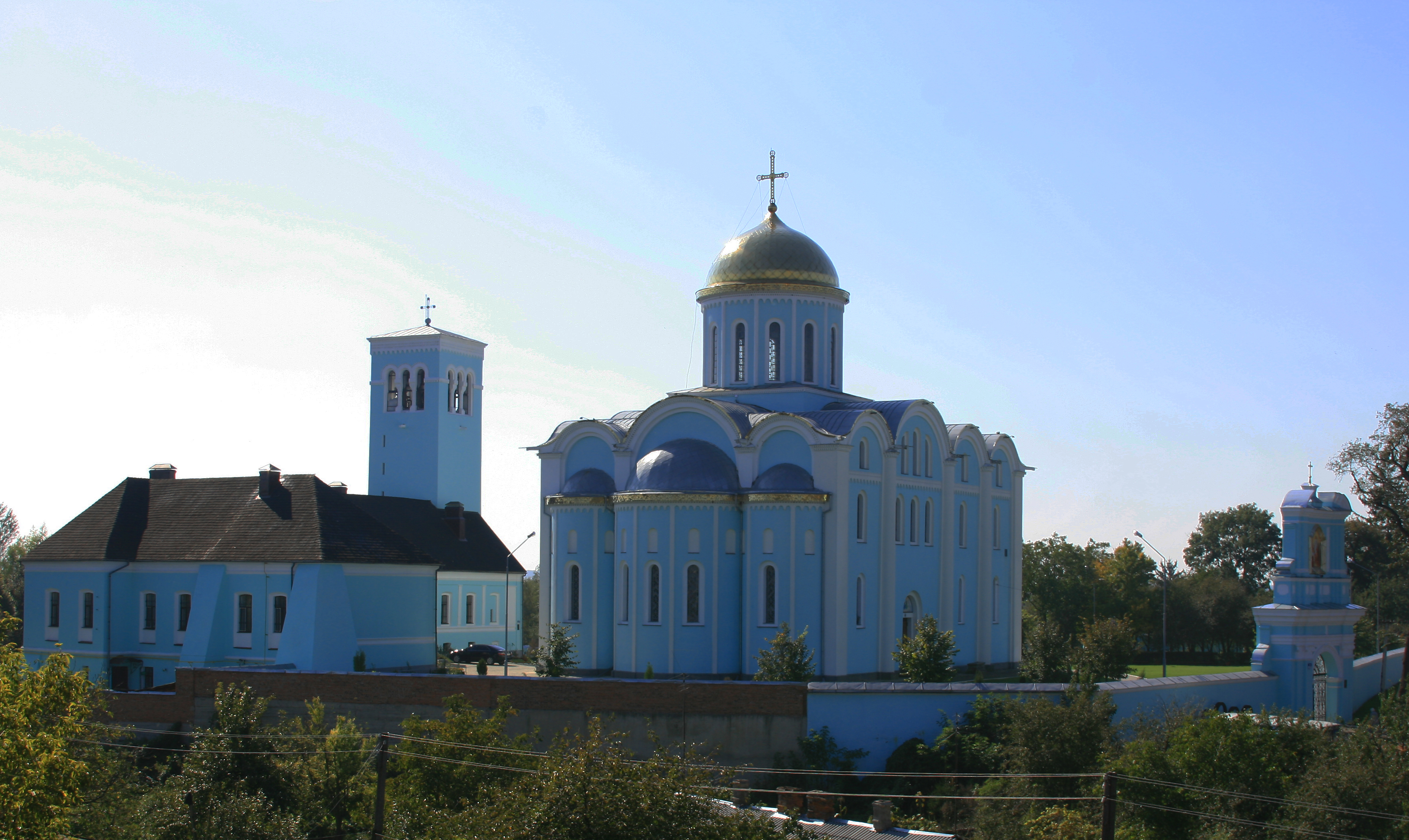 hile
Volynian masters were influenced strongly by the Kyiv school of
architecture, in Galicia they followed both the architectural
traditions of Kyiv Rus and of Western Europe.
Today
there are only ruins of The
Holy
Dormition
Cathedral
in
Galych,
which was built by Iaroslav Osmomysl in 1157. It is a vivid sample of
Volynian
school of architecture, which borrowed a lot from Romanesque style,
popular in Europe of that time. The
Holy
Dormition
Cathedral
in
Vladimir-Volynskiy
(1160)
is
the
only
monument
in
Volynia,
which
survived,
though
reconstructed,
from
Kyiv
Rus
period.
hile
Volynian masters were influenced strongly by the Kyiv school of
architecture, in Galicia they followed both the architectural
traditions of Kyiv Rus and of Western Europe.
Today
there are only ruins of The
Holy
Dormition
Cathedral
in
Galych,
which was built by Iaroslav Osmomysl in 1157. It is a vivid sample of
Volynian
school of architecture, which borrowed a lot from Romanesque style,
popular in Europe of that time. The
Holy
Dormition
Cathedral
in
Vladimir-Volynskiy
(1160)
is
the
only
monument
in
Volynia,
which
survived,
though
reconstructed,
from
Kyiv
Rus
period.
The Holy Dormition Cathedral in Vladimir-Volynskiy, 1160
http://upload.wikimedia.org/ wikipedia/ru/0/0e/%D0%92 %D0%BF_%D0%B2%D0% BB_%D0%B2%D0%BE% D0% BB%D1%83%D1%81%D0% BF%D0%B5%D0%BD%D1% 81%D0%BA%D0% B8%D0%B9_%D1%81%D0% BE%D0%B1%D0%BE% D1%80.jpg
Church of St. Panteleimon is preserved in the territory of Old Galych. Built in the 12th-13th centuries, the church represents Galician school of architecture.
G |
|
Starting with the 13th century a new type of fortifications appeared – column towers called ‘donjons’. There are still some donjons in the countryside of Kholm and Bila Vezha. In the 14th century stone castles started to be constructed. The first fcastle was built in Lutsk (13th-…)
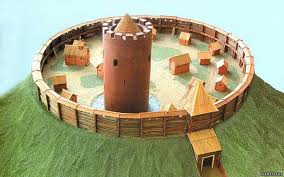

Donjon in Kamenets – Kamenetska Vezha (in Bila Vezha)
on the left: http://www.google.com.ua/imgres?q=%D0%B4%D0%BE%D0%BD%D0%B6%D0%BE%D0%BD+%D1%85%D0%BE%D0%BB%D0%BC+%D0%B1%D0%B5%D0%BB%D0%B0%D1%8F+%D0%B2%D0%B5%D0%B6%D0%B0+%D0%BA%D0%B0%D0%BC%D0%B5%D0%BD%D0%B5%D1%86&hl=ru&sa=X&biw=1440&bih=785&tbm=isch&prmd=imvns&tbnid=BAwEq-KX8egS2M:&imgrefurl=http://satsukevich.ucoz.ru/index/kameneckaja_vezha/0-30&docid=Qod9OFIBjG_g0M&imgurl=http://satsukevich.ucoz.ru/_si/0/36185504.jpg&w=900&h=562&ei=qr0qUJqVO-eK4gTAlICwDA&zoom=1&iact=hc&vpx=1115&vpy=133&dur=3040&hovh=177&hovw=284&tx=136&ty=124&sig=108389530264323323623&page=2&tbnh=140&tbnw=201&start=31&ndsp=37&ved=1t:429,r:36,s:31,i:283
on the right:
http://www.google.com.ua/imgres?q=%D0%B4%D0%BE%D0%BD%D0%B6%D0%BE%D0%BD+%D1%85%D0%BE%D0%BB%D0%BC+%D0%B1%D0%B5%D0%BB%D0%B0%D1%8F+%D0%B2%D0%B5%D0%B6%D0%B0+%D0%BA%D0%B0%D0%BC%D0%B5%D0%BD%D0%B5%D1%86&hl=ru&sa=X&biw=1440&bih=785&tbm=isch&prmd=imvns&tbnid=rV7fb-6WV2vKzM:&imgrefurl=http://www.fortification.ru/oldforum/index.php%3Faction%3Dvthread%26forum%3D3%26topic%3D1211&docid=Rw5CT4bZNce3XM&imgurl=http://www.fortification.ru/uploads/Kam_Stolp_1.jpg&w=594&h=447&ei=WL4qUNGAKMT14QTCgoDABg&zoom=1&iact=hc&vpx=872&vpy=149&dur=2554&hovh=195&hovw=259&tx=109&ty=153&sig=108389530264323323623&page=1&tbnh=135&tbnw=179&start=0&ndsp=31&ved=1t:429,r:5,s:0,i:87
Lubart’s castle in Lutsk. The 14th century |
L |
vl.restgeo.com |
100travels.com.ua |
Video Lubart’s Castle in Lutsk:
http://www.youtube.com/watch?v=4lYYz1cTPOs&feature=player_detailpage
http://www.youtube.com/watch?v=4lYYz1cTPOs&feature=player_detailpage#t=77s
<iframe width="640" height="360" src="http://www.youtube.com/embed/4lYYz1cTPOs?feature=player_detailpage" frameborder="0" allowfullscreen></iframe>
FINE ARTS. Painting had a leading position in artistic culture of the Kingdom of Galicia-Volynia. Fresqos and icons are the samples of that culture. Fresco painting continued the traditions of Kyiv and was used in decoration of Volynian and Galician cathedrals. Still, in the last quarter of the 12th century there appear cathedrals without wall-painting, e.g. Lutsk cathedral. In the 13th-14th centuries cathedrals were being built intensively, and frescos were used to paint the altar only. Wall-painting survived only in Armenian cathedral in Lviv, dated 14-15th centuries.
The oldest of survived frescos (14th-15th centuries). Armenian cathedral, Lviv http://ru.wikipedia.org/wiki/ |
O
|
A real masterpiece of Galicia-Volynia icon-painting of that period is
the ‘Odigitria miracle-working of Volynia’ (Odigitria, Mother of
God) in Lutsk (beginning of the 14th
century).
real masterpiece of Galicia-Volynia icon-painting of that period is
the ‘Odigitria miracle-working of Volynia’ (Odigitria, Mother of
God) in Lutsk (beginning of the 14th
century).
Czestochowa icon of Holy Mother, or the so-called ‘Black Madonna’ painted in Galicia and with the course of time passed to Poland, is another masterpiece of the 14th century. Icons of saints which survived until now are numerous.

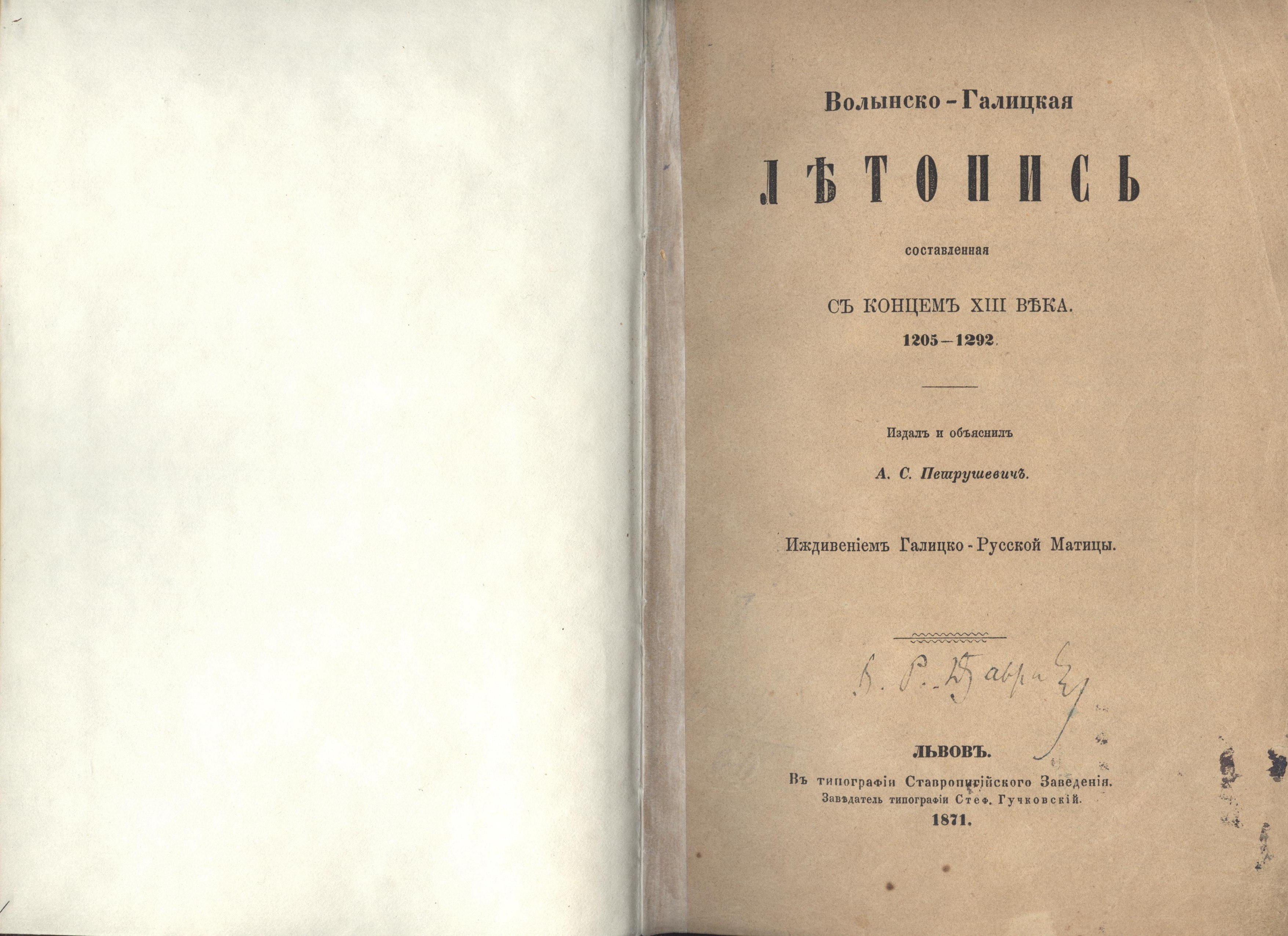
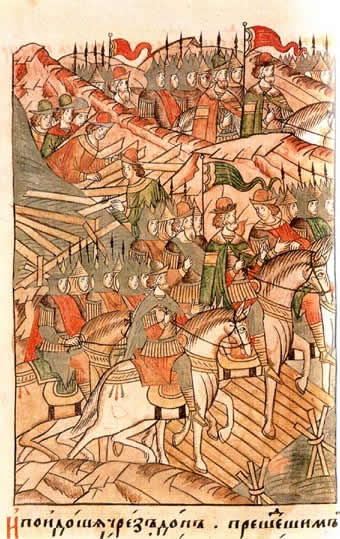 alician-Volynian
Chronicle, a part of Ipatiev Chronicle. A historical
account of events, which happened in the Kingdom of
Galicia-Volynia in 1201-1291
alician-Volynian
Chronicle, a part of Ipatiev Chronicle. A historical
account of events, which happened in the Kingdom of
Galicia-Volynia in 1201-1291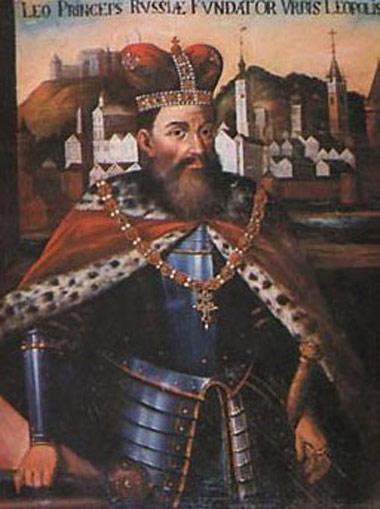
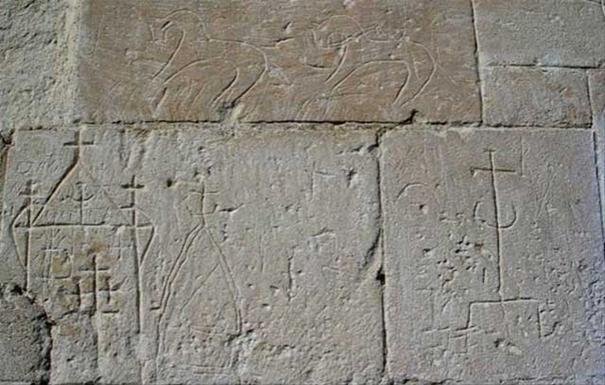 raffito
on the walls of
Church
of St. Panteleimon
raffito
on the walls of
Church
of St. Panteleimon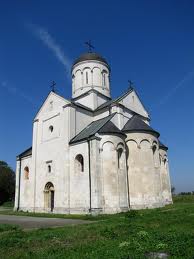 Church
of St. Panteleimon in Galych (Shevchenkovo, Ivano-Frankivsk
region)
Church
of St. Panteleimon in Galych (Shevchenkovo, Ivano-Frankivsk
region)

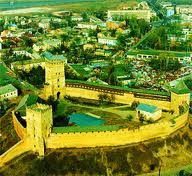 ubart’s
castle in Lutsk. The 14th
century
ubart’s
castle in Lutsk. The 14th
century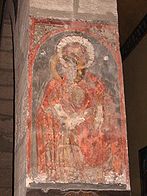
 digitria
miracle-working of Volynia
http://www.cirota.ru/forum/images/31/31139.jpeg
digitria
miracle-working of Volynia
http://www.cirota.ru/forum/images/31/31139.jpeg